“What’s the cheapest dehumidifier to run?” is a question we are often asked by people considering buying one for their home.
Because there is a wide range of dehumidifiers on the market – all with different capacities – the cheapest dehumidifier for you to run will depend on what you need it for and how often you intend to use it. This quick guide will help you to see how you can choose the best dehumidifier to help keep your average electricity bills low and decide what type of dehumidifier is best for your home.
Will the dehumidifier with the highest watts use the most energy?
The simple answer is yes, but you need to think about several factors;
- The time of year that you will be using your dehumidifier
- Where you are going to be using your dehumidifier
- What you want to use your dehumidifier for
- The extraction rate of water per kilowatt
- Are you using it in an unheated or heated space?
How does the time of year effect energy costs?
Obviously, your electricity costs the same per kilowatt hour all year round – and whether that’s cheap or expensive depends on your supplier. However, you’re more likely to use your dehumidifier during the winter, because that’s when it’s needed to remove the root cause of condensation on your windows and mould on your walls.
Heat is a good thing in winter. The wattage that a dehumidifier uses is turned into heat, so you get a dual running cost benefit from the unit. You get less condensation on the windows, less chill in the air and the space feels warmer. All good things. If you have another source of heat, like a radiator or heater, near to the dehumidifier then you can probably turn it down or off completely to balance out the energy usage of the dehumidifier.
Type of dehumidifier for energy-efficient operation
If you are using a dehumidifier during the winter in a cold hallway, conservatory or utility room, then a bit of extra heat from a desiccant dehumidifier would probably be beneficial. A desiccant dehumidifier draws in the air and passes it over material which soaks up the moisture. They are ideal for colder areas. But if you are using you dehumidifier in a space that is nice and warm – like your living room, kitchen, or bedroom, then a more energy efficient compressor dehumidifier would make sense. Also known as a refrigerant dehumidifier, these units draw the air over cold coils. The coils condense the moisture in the air into water, which is collected in an integral water tank.
It’s cheaper to use a dehumidifier than a tumble dryer
Do you need to dry laundry? If yes then a dehumidifier is definitely the cheapest alternative to a tumble dryer. Just compare the 650 watts used by a desiccant dehumidifier in Laundry Mode with the 4000 watts of a tumble dryer. Your washing dries faster and that gives you a lower per hour cost for drying your laundry.
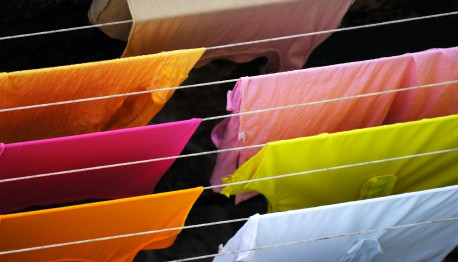
Did you know a dehumidifier is cheaper to run than a tumble dryer?
What about the water extraction rate of water against the watts used?
Desiccant dehumidifiers are the ones that have the most variable wattage and their extraction rate varies against that wattage, for example at 20°C and 80% relative humidity:
Meaco DD8L Single fan speed = 3.5 litres at 330 watts (39dB)
Second fan speed = 7.2 litres at 650 watts (43dB)
Third fan speed = 8 litres at 660 watts (48dB)
Compare this to the very best compressor dehumidifiers on the market, like the Meaco 12L Low Energy Dehumidifier 6.72 litres at 144 watts (44dB) or the Meaco 20L Low Energy dehumidifier 12 litres at 231 watts (46dB).
You can see that we have added in the noise rating in brackets as well because we think that noise is part of the decision process and needs to be taken into consideration. We have written another guide about quiet dehumidifiers, which you can read here.
So at 20°C the compressor dehumidifier looks a better bet but the DD8L gives you the option of having a quieter dehumidifier and don’t forget that we have done the comparison against the most energy efficient dehumidifiers on the market. Try that against our competitors and see what the results are like!
Power ratings at low temperatures in unheated spaces
The results for the DD8L will remain the same at 10°C and 60%rh but the compressor dehumidifiers will no longer look so impressive.
Single fan speed = 3.5 litres at 330 watts (39dB)
Second fan speed = 7.2 litres at 650 watts (43dB)
Third fan speed = 8 litres at 660 watts (48dB)
The extraction rate of the refrigerant dehumidifiers falls sharply as the temperature and relative humidity drops. The Meaco 12L Low Energy Dehumidifier gives 1.08 litres at 118 watts (44dB) and the Meaco 20L Low Energy Dehumidifier 1.8 litres at 185 watts (46dB).
So you can see why desiccant dehumidifiers are recommended for any application where the temperature is likely to be below 16°C because even at their lowest fan speed the desiccant will extract double that of a 20 litre dehumidifier.
So what dehumidifier do you buy to keep running costs down?
This is a personal choice and you need to make a trade-off between noise, wattage and extraction rate which will all depend on the time of year that you are using the dehumidifier and the location.
For unheated spaces it has to be the DD8L Junior desiccant dehumidifier and it was this type of application that it won its award for.
If you want the cheapest dehumidifier to run for a small house then it is the Meaco 12L Low Energy Dehumidifier and for a medium to large house then it is the Meaco 20L Low Energy Dehumidifier.
To find out more, just call our friendly team on 01483 234900 and we’ll be happy to talk you through, find out where you need to use your dehumidifier and give you the best advice.
The DD8L Zambezi is award-winning for low energy costs.
Products featured: Meaco 12L Low Energy Dehumidifier and Meaco 20L Low Energy dehumidifier

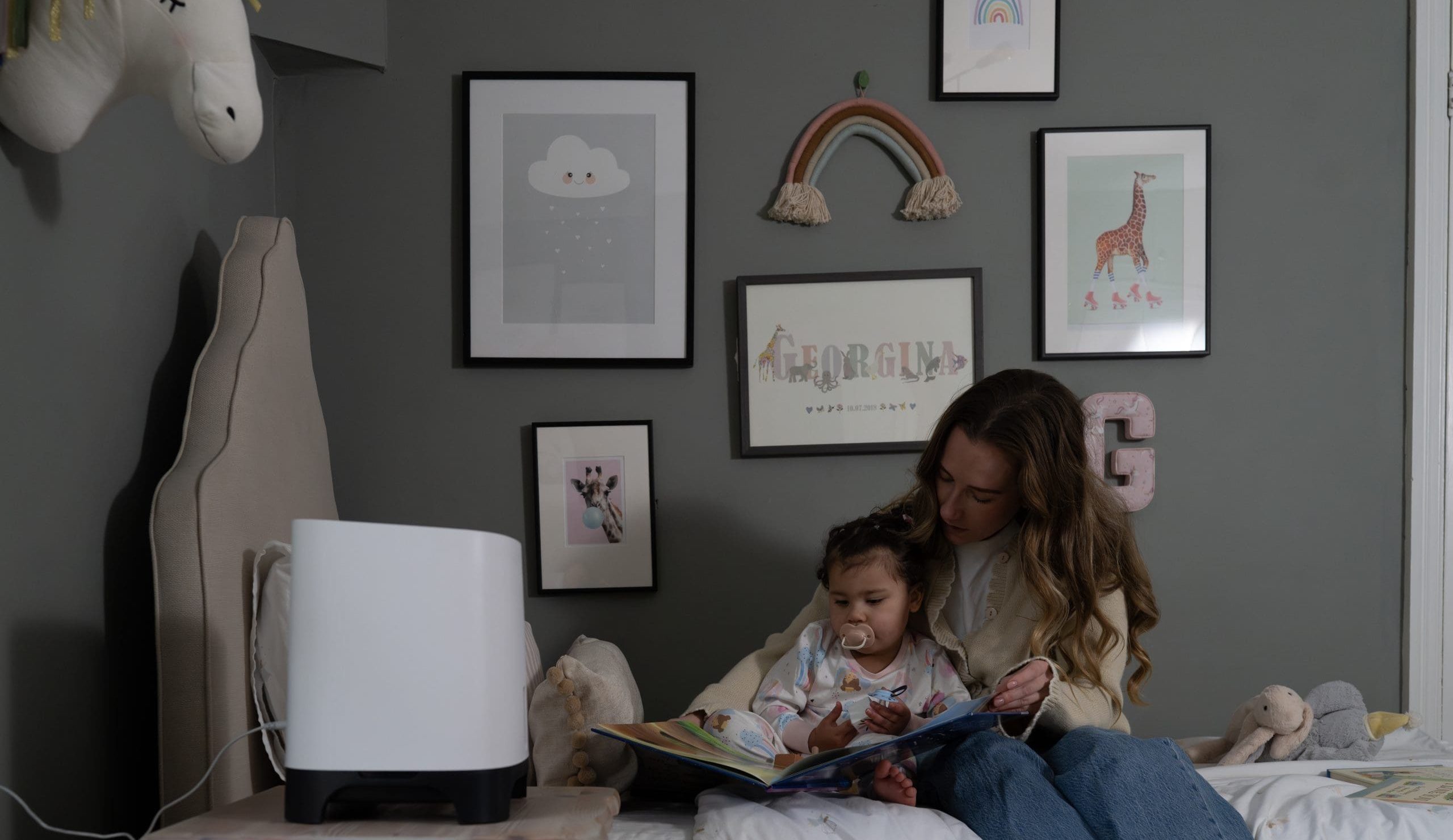



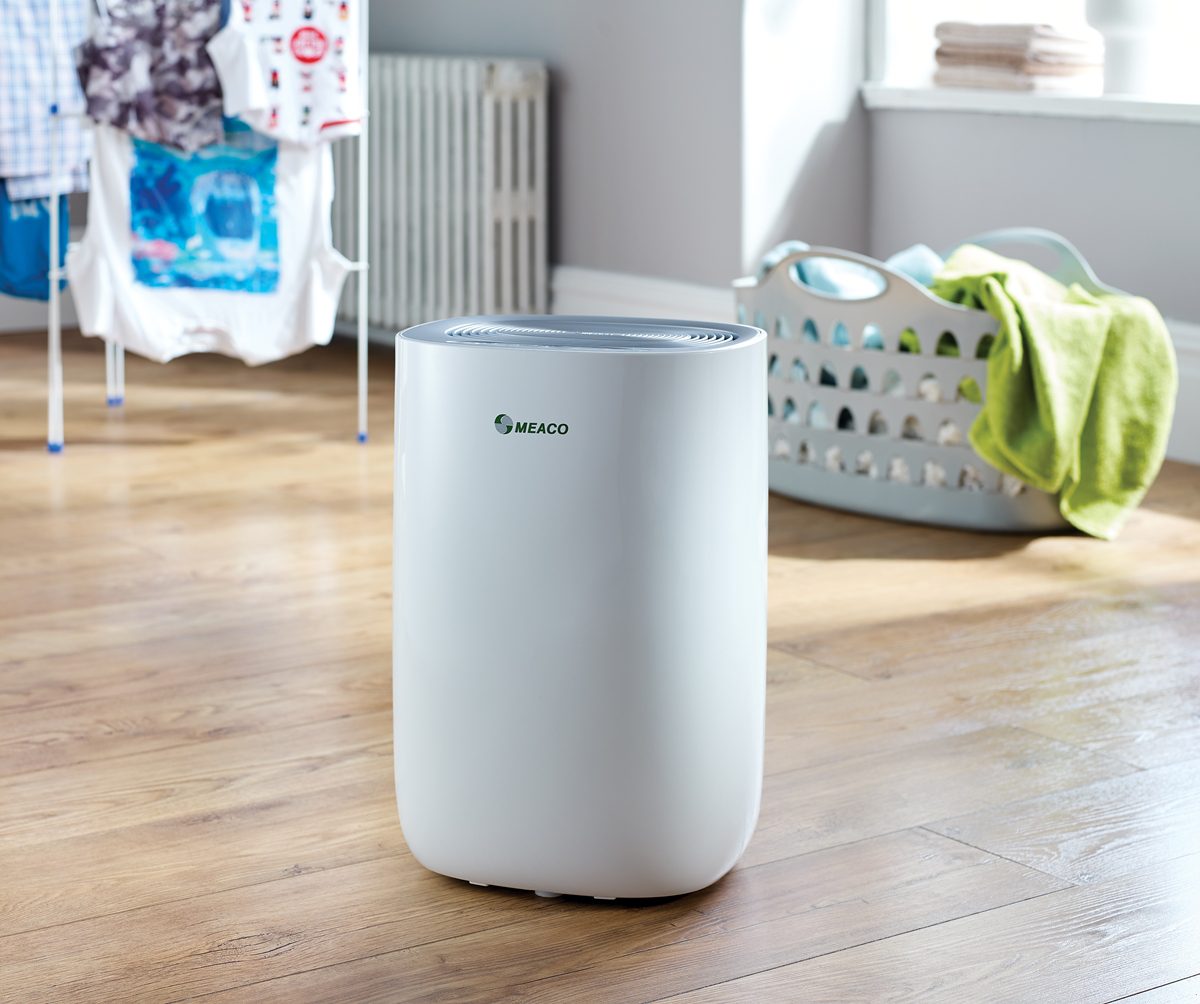

44 responses
Thank you Chris. Don’t they work directly from a 240 volt mains socket? That is what I use to power anything else from my generator, including my laptop since my generator is has proper sine-wave invertor so doesn’t fry CPU’s etc in laptops, washing machine, or I guess even sensitive medical equipment. To all intents and purposes it would just be a standard 240 volt mains output in a house, the only difference is that it is on a boat and I am limited to a few hours usage per day. It is the Kipor IG1000 generator.
Traditionally the issue with generated power supplied is that the quality of the power output has not been stable enough quality and it damages the IC chips surface mounted on the main PCB in our machines. This is not unique to Meaco this is also why so many manufacturers advise not to use generated power supplies to run their products.
Newer modern generators do claim that they are giving a better-quality wave of power and can “smooth” the output sine when they “cough” or change speed however like many manufacturers we have found that they still do not produce a clean enough supply and they do damage the IC chips we use. Unfortuantely it will not be the generator companies who have to handle the warranty on the dehumidifiers if the signal does fail!
We would love to say yes buy one of our products and it will be fine (as it is a sale after all) but we have from experience found that we see a large failure rate for PCBs when the units are being run from a generated power supply.
would this work for my boat (fiberglass cabin cruiser, 6 meter long by 2 meter wide) using my generator only a few hours daily, would 2 hours daily be sufficient to get the inside dry and keep it dry (gets a lot of lot of moisture from cooking with propane and general condensation)
Gary,
I am afraid that dehumidifiers do not work while being run off generators. that goes for everyones and not just Meaco.
Sorry.
Chris
Thank you Chris. Don’t they work directly from a 240 volt mains socket? That is what I use to power anything else from my generator, including my laptop since my generator is has proper sine-wave invertor so doesn’t fry CPU’s etc in laptops, washing machine, or I guess even sensitive medical equipment. To all intents and purposes it would just be a standard 240 volt mains output in a house, the only difference is that it is on a boat and I am limited to a few hours usage per day. It is the Kipor IG1000 generator.
Traditionally the issue with generated power supplied is that the quality of the power output has not been stable enough quality and it damages the IC chips surface mounted on the main PCB in our machines. This is not unique to Meaco this is also why so many manufacturers advise not to use generated power supplies to run their products.
Newer modern generators do claim that they are giving a better-quality wave of power and can “smooth” the output sine when they “cough” or change speed however like many manufacturers we have found that they still do not produce a clean enough supply and they do damage the IC chips we use. Unfortuantely it will not be the generator companies who have to handle the warranty on the dehumidifiers if the signal does fail!
We would love to say yes buy one of our products and it will be fine (as it is a sale after all) but we have from experience found that we see a large failure rate for PCBs when the units are being run from a generated power supply.
Hi Chris
I have done lots of research, read reviews etc but still unsure between Meaco DD8L or meaco ABC
I only need dehumidifier in my bedroom which is cold, around outside wall where bay windows are, which need wiping daily. Also problems with mold. The humidity at highest is 80%
I want energy efficient but read if room cold deccisant better but they are dearer to run. Room temperature is above 10c
I also want one with humidistat and as it’s in bedroom need one less noisy
Thanks
That one is easy, it has to be the ABC.
Hi Chris, I have an old long house with solid sand stone walls with a 1 mt. Wide corridor extension which I put on 30 yrs. Ago. I have a Meaco 12 Lt. At one end and the zambezi DD8L at the other end about 20 Mts. apart. The house tends to be very damp without the dehumidifiers running. My question is are they fighting against each other. I know it is recommended to have the dehumidifier in the centre of the house but the end rooms are the dampest on the end walls,
The dehumidifiers are doing the job but I would like to cut the running costs if it was possible.
Peter,
Thank you for your purchases and your question. They will not be fighting each other as they just respond to their humidistat reading. To reduce running costs you can look to increase the target relative humidity by 5%rh or turn the heating up a bit (although of course you have to pay for the extra heat).
Chris
I have a 4 bed house and 2 bedrooms facing North have condensation on windows if someone sleeping there. Also built in wardrobes on outside wall have mould and musty smell. Heating is not on all the time, only when needed so rooms can be cold for most of the day. Should I go for a Meaco DD8L in this case.
Absolutely.
Hi Chris, can you tell me what the difference is between the DD8L and the DD8L Junior. I have a very small maisonette which is very cold , I have bad condensation on the windows and moisture level around 60 to 78 . I only have electric heating in the living room and bedroom( which I don’t put on a lot) , and no heating in the bathroom and kitchen . Which dehumidifier would suit my situation, I am worried about the cost as I am on economy seven,I am thinking that I am looking at a dessicant model , which is more expensive to run , thank you
Maria,
The Junior does not have the ioniser or the anti-bacterial filter that you get on the standard DD8L. The DD8L Junior would help a lot but the MeacoDry ABC range would be cheaper to buy and run for you.
Chris
Hi
I have an aquarium room generally running at 24C there are a lot of fish tanks here. the room size is 3m x 5m what would you recommend as the most efficient dehumidifier to keep the humidity at 60%.
Electricity cost is my biggest expense.
Paul,
It depends whether the tanks are covered or not but it sounds like you have a lot of moisture to deal with and I would look at the 20L Low Energy to get thee xtraction required and to keep costs down in the long term.
Chris
Is there a typo in the English July 2015 version of the DD8L available online? I notice the power consumption reads:
30/330/650 watts
In the article above you reference the DD8L running at 330, 650 and 660 watts.
Unfortunately the manual sent with my DD8L is in Norwegian…
To clarify for you when the dehumidifier is running in fan only and just checking the room humidity it will use 30 watts. In single fan speed it uses 650 watts and in Laundry more just 10 watts more because of the higher fan speed.
Hope this helps.
Hi Chris,
We are looking for the most running-cost-effective Meaco dehumidifier to purchase, for use under the following conditions :
– For use aboard a closed 47ft yacht, with approximately 100 cubic meters of air volume to treat.
– For use only over 7 winter months, in Eastern Mediterranean. (October – April temp range 6 – 21 degrees C ).
– The yacht will be un-attended, so :
– noise is NOT a factor.
– surplus heat benefit is NOT a factor.
– ability to use as a clothes drier is NOT a factor.
– automatic and safe unattended operation IS a factor.
– Durability of it’s components in a maritime sea air environment IS a factor.
– The yacht has a 220V and 12V power supply option, BUT very importantly, low overall electricity consumption IS an important factor as with most yachts.
I have studied all the data you provide in articles above, but still not sure, for example, which of a Meaco DD8L, DD8L Junior, 12L Low Energy or 20L Low Energy model, will do an adequate job, in the most energy-efficient way.
Can you advise please ?
Thanks & Regards,
Mark
Mark,
With the temperatures being resonable and energy consumption being important i would put the Meaco 12L Low Energy on board.
Chris
What about the condensation heat?
An air cooler makes hot rooms cooler by evaporating water. The evaporation of one liter of water costs 2256 kJ. Favorable on hot summer days. And it costs little electricity and has a simple technique. A dehumidifier does the opposite. So there must grow 2256 kJ per liter of produced condensed water. Is the heat of a dehumidifier equal to the electrical capacity ánd 2256 kJ per liter of water produced?
So comparison at 10 ° C and 60% rh.
Desicant dehumifier Meaco DD8L 3.5 ltr 330 W
Compressor dehumifier Meaco 12L Low Energy 1.08 ltr 118 W.
So for 3.5 ltr compressor dehumifier needs 3.5 / 1.08 x 118 W = 382 W.
Difference 52 W. (382 – 330) Allready in advantage for the desiccant
But also more water vapor condensed.
Difference 3.5 minus 1.08 = 2.42 ltr / 24 h
0.1008 / h
0.1008. 2256 kJ / kg = 227 kJ / h
227 kJ / 3600 sec = 0.063 kJ / sec = 63 watts.
Total W advantage for the desiccant 52 W + 63 W = 115 W
Leon,
Thank you for you message.
On a refrigerant machine (like the 12LE or 20LE) the COP varies from the manufacturer of each range of compressors. For the maths to work you need to
look at the performance curve of each compressor and take into account the contact time (fan speed) of the air on to both the condensing and evaporating coils (which in most domestic machines are directly attached/next to each other).
The latent heat loss/ or gain after evaporation is always in a positive as heat recovery takes place from the condensing coil (by default of air passing over it).
So in answer to the question ” Is the heat of a dehumidifier equal to the electrical capacity ánd 2256 kJ per liter of water produced” —-nearly yes @30C/80%- of course we don’t see that condition in UK sales much- all manufacturers currently optimise to this as a benchmark.
For desiccant based machines it is slightly more complicated as you need to allow for the energy used solely for the regeneration cycle and not for the distribution of the air on the input side. We use one fan to do both jobs so the data becomes a bit more difficult to work with.
The work that we have done shows that you are looking at a deficit of kj/L – this is why the whole application must be looked at (because a desiccant machine working at 10C will always be more efficient than a refrigerant machine at 10C).
The idea of the blog is to give the general consumer the information to make the correct decision on the type of dehumidifier the buy. We have to try and make things as simple as possible to be as accessible to as many people as we can.
Chris
I have a Meaco DD8L in a 2 bed flat with central heating & double glazing (the windows do not have condensation) . I keep it in the kitchen, the coldest room with no radiator. I bought it because this is a 30s maisonette and the plaster is blown in some rooms and damp can be a problem, particularly in adjoining properties. I have been running it on a single fan, two drops (normal) with the ioniser on. It’s been on day & night and works very well – a lot of water is being extracted.
However, I notice my electricity useage has gone up quite a lot. Should I just run it at night? Or turn it off when the central heating is on? Is there a more economical way to use it? I would appreciate any advice.
Kat,
Thank you for your purchase and your message. It is consuming 330 watts in that mode and as you say it is removing a lot of water for you. As the flat dries out it will run for less. The other thing is that as well as the water the 330 watts is also being delivered to the space as heat. If you turn the dehumidifier off you might end up turning the heating up so you will spend the same amount of money overall. Remember it only runs when it needs to and if you turn it off then it cannot protect your property from damp.
Hope this helps.
Chris
Yes, that is helpful thanks Chris.
I have changed the settings from two drops to one (still leaving it on constantly) and it’s not coming on as frequently and the water chamber does not need emptying as often.
On the previous settings the fan seemed to be running constantly both day and night – even after a couple of months – so either the flat is incredibly damp (as I say, no mould or condensation) or the general level of humidity in the air is the reason.
Do you think Is it still effective on these lower settings. Yours
Kat
Kat,
What you have done is to change the target humidity from 50 to 60%rh. If that gives you the results you want and you are happier with what you see then it is the right option.
Chris